Variety of violets "Angelica": description, care and reproduction

Violets are one of the most delicate and beautiful flowers in the world. Such plants are more often than others grown at home, they look original and very aesthetically pleasing. Plants have healing properties, a decoction of leaves and petals saves from many ailments. There are several hundred types of violets, they differ in the shape of the leaves, size, color of flowers. One of the brightest representatives of violets is the "Angelica" variety.

Description
The description of the variety should start with the fact that Angelica is actually a saintpaulia, not a violet. Real violets belong to the violet genus, and "Angelica" is a variety of the Gesneriaceae species. However, it so happened that Saintpaulia in everyday life is called a violet, this is more familiar and understandable. In our material, we will also adhere to a similar tradition.
Saintpaulia grows in the east of the African continent (Kenya, as well as Tanzania) near rivers and waterfalls. The plant was discovered in 1893 by the French explorer Walter von Saint-Paul.
The flowers of this plant are especially splendid; the petals can be of various shades of pink. Each petal has an outline pattern: purple and white, which makes this variety original. Such configurations do not appear immediately, after the first flowering a purple stripe appears, then a white one. All petals are dotted with small dots of whitish-pink color, which emphasizes the ephemerality and sophistication of the plant. The leaves of "Angelica" are the most common, there are no peculiarities here, they are dark green in color.

The stems are short, there is a leafy rosette near the roots. The leaves are oval, dark green in color or slightly mottled. The flowers consist of five petals and are arranged in a brush. Most Saintpaulia varieties are hybrid.

The varieties are differentiated into several classes, differ in color and shape. There are the following subspecies of "Angelica":
- classic;
- star-shaped;
- rimmed;
- chimeras.

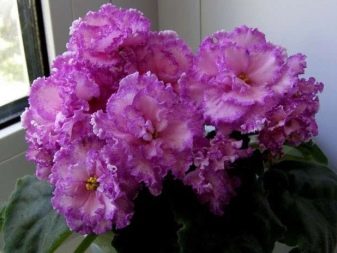


The most common saintpaulias are with rosettes from 22 to 42 cm in diameter; there are also types of flowers of non-standard configurations - from 45 to 62 cm.
Consider several varieties of this variety.
- "PT-Angelica". These are large double-flowered flowers with a double corrugated border. The entire surface is covered with a reddish "dusting", the edges are usually light in color. There are also specimens that have blue and dark blue specks. This variety blooms profusely, looks very beautiful.
- "RS-Angelica"... The flowers are large, double, and have rounded shapes. There are blue veins here, and the petals are dark green, oval.
- "EK-Angelica". These are pink large violets, and there can be a lot of shades of pink. The leaves are dark green, heart-shaped.

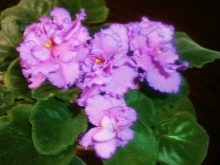

All these types of violets differ in size and different colors, and are united by their abundant flowering. The plant has many medicinal properties, infusions and decoctions from violet petals are especially useful.
Care
Violet "Angelica" is a rather hardy plant that is not afraid of pests, but in order for development to take place in a normal mode, it is necessary to create normal conditions and do the right care. Here are the most important parameters to look out for:
- the degree of illumination;
- indoor humidity level;
- water temperature during irrigation;
- daytime and nighttime temperatures.
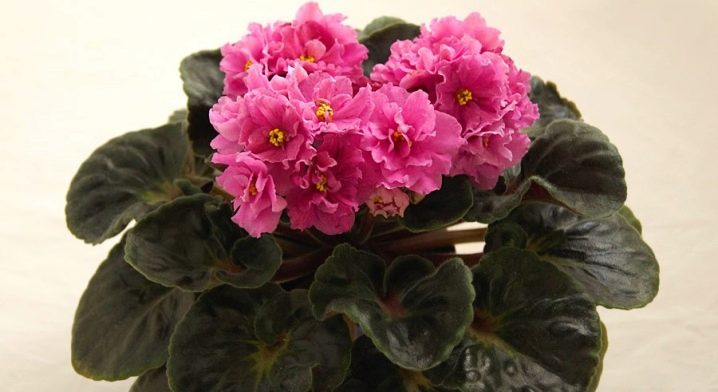
Caring for flowers is not particularly difficult.The optimum temperature should be + 18-23 degrees Celsius. To make the correct watering, you should prepare the appropriate trays, in them excess moisture accumulates for a short time, then evaporates. When watering, you need to monitor the water temperature, it must be at least +18 degrees. Watering the plant is permissible in the process of drying out the soil.
It is important to observe the "golden mean": the soil should not be too wet, but it is not recommended to overdry it. The optimum air humidity for violets is 45-55%. Fine dispersed watering should be used only when the plant is in bloom.

For all-round lighting, it is recommended to rotate flower pots from time to time around their axis. Saintpaulia can bloom all year round, it is recommended to use artificial lighting for this. It is best to use fluorescent lamps or phytolamps. The flower does not tolerate direct sunlight and reacts extremely negatively to cold drafts, so take care of diffused light and warm space.
In the cold season, lighting should be present for 10 hours (this is the minimum), the temperature in the room should not fall below +15 degrees. In the winter months, the amount of watering is limited to twenty percent.
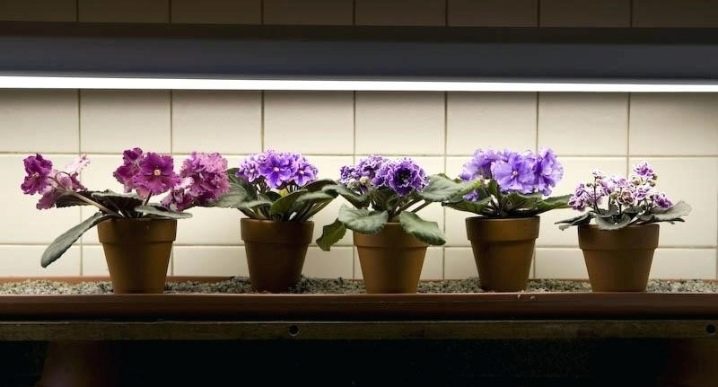
The soil is usually used combined, where there are:
- leaves;
- turf;
- needles;
- peat
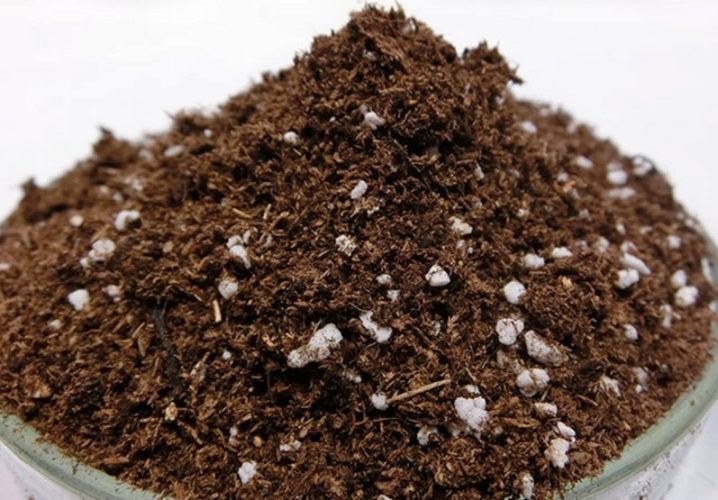
The ratio is 3: 2: 1: 1, baking powder is also often added:
- perlite;
- vermiculite;
- sand.



The introduction of various fertilizers is permissible at least once every 2-3 weeks. Top dressing should be done during the growing season. Thanks to the correct feeding, the plant looks healthy and blooming. In the initial period of development, the violet needs nitrogenous supplements; an adult plant additionally requires phosphorus and potassium.
Specialty stores sell special additives for Saintpaulias., when buying, it is recommended to consult with the seller. Fertilization ends in late September - early October, the plant must gain energy, rest, in order to fully enter the winter period.

Violets are renewed every 2.5 years on average; they are subject to rapid degeneration.
A transplant should be done every 12 months, while the root system should remain in a coma of earth. To successfully perform such an operation, you should additionally purchase large ceramic or plastic containers. Small holes must be drilled in all vessels, then a full air exchange will be maintained.
Often, gardening partnerships and shops offer special pots for Saintpaulias. In such devices, special drainage holes are made through which excess moisture comes out.

The minimum size of a pot for violets can be about 65 mm in diameter, the second container should be 80-100 mm. It is important that the soil meets all the requirements, otherwise the plant will not be able to fully develop. The acidity level of the soil should be in the range of 5.6-6.6 pH. The soil that is sold in the store is labeled "saintpaulia" or "violet". Such a product needs improvement; certain additives should be added.

Reproduction
The violet reproduces in two ways.
- Seeds are most commonly used. In fact, such reproduction presents a number of technological difficulties, but in this case the plant turns out to be strong and full-fledged, it is less sick. During the growth process, you should monitor how the plant blooms and produces seeds.

- Second way - this is grafting, from the point of view of technology, this method is the most elementary, but it has its flaws. The plant turns out to be not so strong and resistant, it requires special care. To propagate Saintpaulia, it is enough to cut off a small fragment of the cutting and place it in a jar of water. After a few days, small filaments of roots should appear on the branch.After the plant gains strength, it can be transplanted into the ground.
The soil should be used, which is sold on specialized trading platforms, designed specifically for violets.
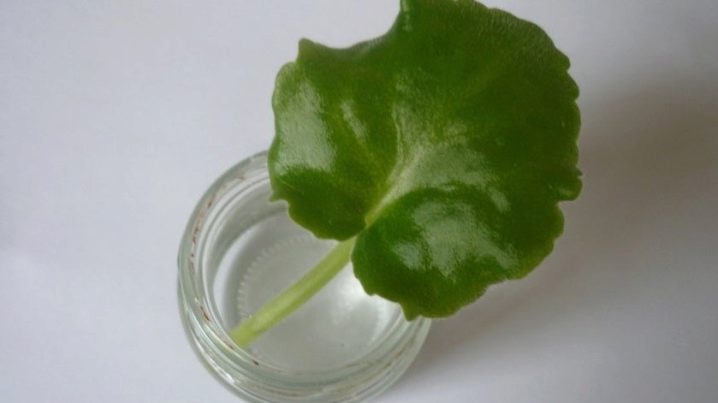
Saintpaulias can reproduce using leaf cuttings, as well as leaf fragments and daughter rosettes. Cuttings with leaves are most often used. At the same time, the leaf should be complete and healthy, if it is withered, with signs of yellowness, then nothing will work. Usually the size of the cutting does not exceed three centimeters. After germination of roots, the plant is planted in the ground to a depth of no more than 2.2 cm.
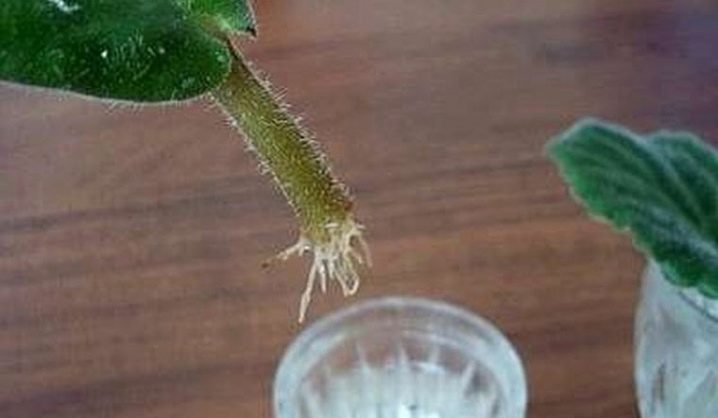
It is important to understand that the method of propagation of violets by cuttings requires more careful care, if everything is done "according to science", then a positive result will not be long in coming. Water for the future Saintpaulia needs to be defended for one day and made sure that it does not have any impurities.
As far as sports are concerned, this is a different variety from the traditional description. Sports differ in leaves and flowers themselves. Usually, fantasy varieties are subjected to sporting. A guaranteed identical color scheme can only be inherited from a stepson. "Sport" is translated as "spoil", if the flower "spoiled", it means that it blossomed not in accordance with its variety. There are many reasons for the emergence of sports - from abandonment to an unsuitable climate.

Diseases and pests
If the violet is properly looked after, then it rarely suffers from pests.
Diseases in these plants can be as follows.
- Fusarium. This is rotting of the root system, degradation and softening of leaves. It is not possible to cure the violet.
- Gray rot. Appears when the soil contains an excessive amount of moisture. You should treat the flower with "Fundazol", stop watering, sprinkle with rubbed charcoal and transplant into another container.
- Powdery mildew. Quite a dangerous disease. A small, white, talc-like rash appears on the leaves. The violet should be treated with Topaz, there are also other fungicides.
- Mite. A pest that multiplies quickly and can spoil several violets at once. When it occurs, the leaves are covered with a yellowish bloom and fall off. Such parasites appear as a result of overdrying of the room and too high a temperature. You should make a solution of laundry soap and wipe the leaves and stems with it.
- Thrips. This is another dangerous pest that can attack a plant if there is not enough humidity in the room. In this case, Saintpaulia should be sprayed with Aktellik, Inta-Vir, Fitoverm, Aktara insecticides.
- Nematode. If you start a violet affected by a nematode, then the plant will have to be eliminated (along with the soil and capacity). But if the violet only "picked up" such an infection, then it should be treated with "Fitoverm".
- Aphid. Treatment should be started as soon as the first signs of infection become visible. Signs of aphids: the leaves turn yellow, gray, brown. It is treated with the same drugs as in the case of a tick infection.



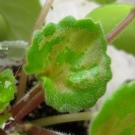

As a preventive measure the plant should be exposed to diffused lighting (at least 12 hours daily), feed with various chemical compounds, water in a timely manner. In addition, be responsible for the reproduction of violets and the composition of the soil. For any signs of illness, immediately isolate the plant by taking it to another room.
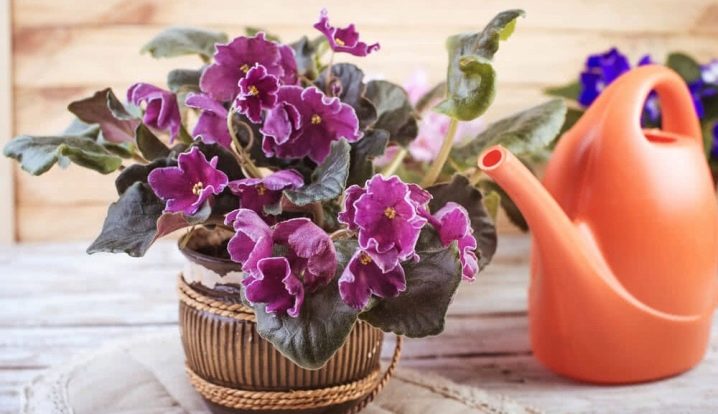
For the soil and volume of dishes for Saintpaulia, see the video below.































The comment was sent successfully.